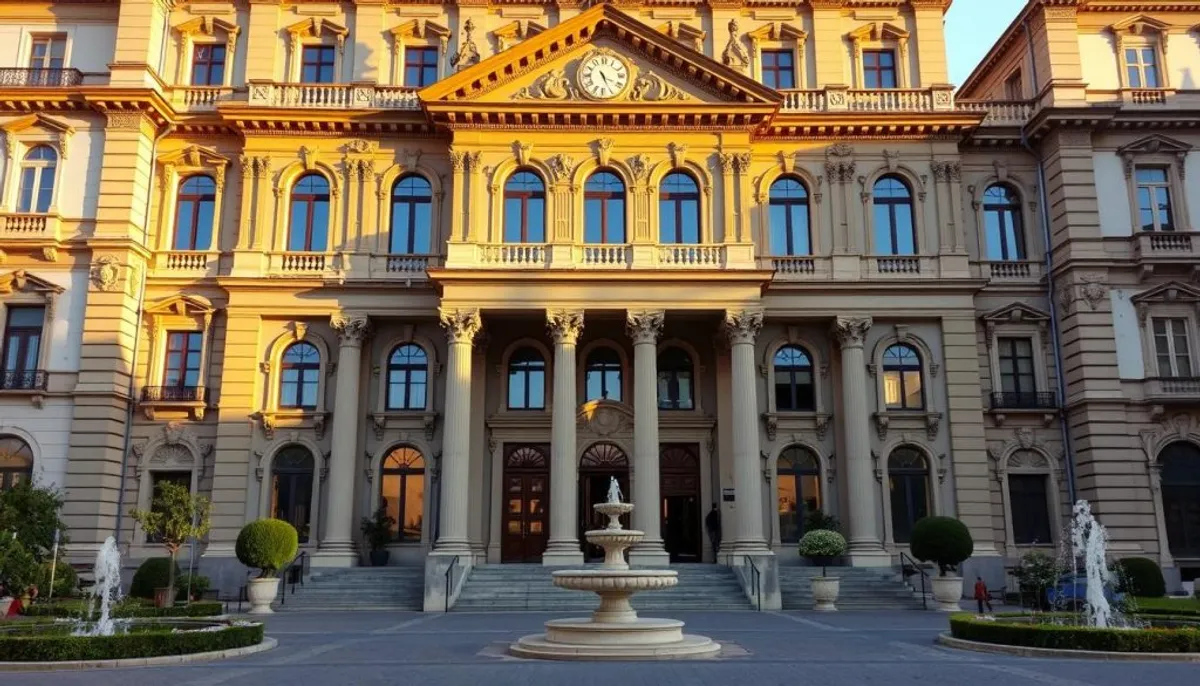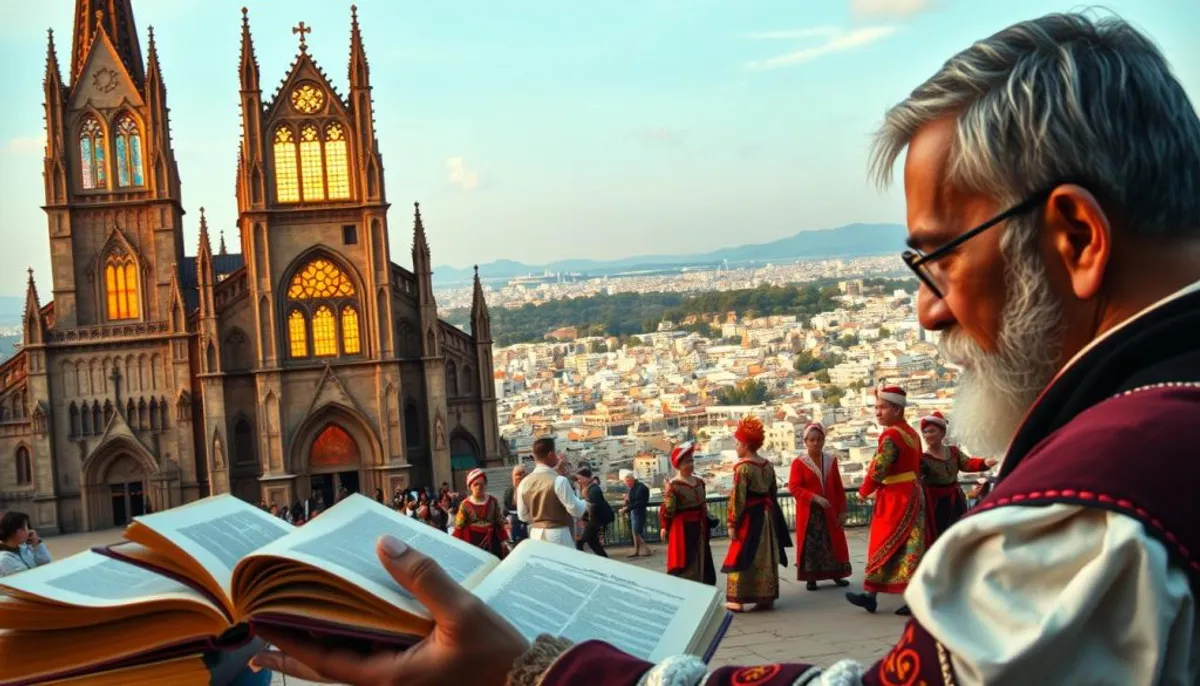In October 1963, André Malraux spoke words that marked the history of cultural thought in the 20th century. He declared: “Culture is the heritage of the nobility of the world.” This profound statement continues to resonate today.

Malraux, then Minister of Cultural Affairs in France, shared this vision during a trip to Canada. From October 7 to 15, he visited Ottawa and Quebec. He conveyed a message about the importance of civilization and cultural heritage.
On October 11, during a speech in Quebec, Malraux emphasized a crucial choice. He spoke of the necessity to preserve cultural wealth so as not to lose our identity. This statement was broadcast the next day on Inter Actualités, captivating a wide audience.
This visit strengthened the ties between France and Quebec. It paved the way for a new era of cultural cooperation. The nobility that Malraux speaks of is not that of blood, but that of spirit. It is a universal heritage that everyone can claim as their own.
Who said culture is the heritage of the nobility of the world
The phrase “Culture is the heritage of the nobility of the world” is attributed to André Malraux. This French thinker of the 20th century left a mark on literature and politics. He viewed the fine arts and humanities as a universal heritage, essential to our humanity.
André Malraux: the man behind the quote
André Malraux was a writer, intellectual, and French politician. He served as Minister of State for Cultural Affairs under President Charles de Gaulle from 1959 to 1969. His vision of culture as a unifying force was shaped by his passion for art and literature.
The historical context of the speech in Quebec
Malraux delivered these words during a visit to Quebec from October 7 to 15, 1963. This visit occurred during the Quiet Revolution, a period of major social and cultural changes. His goal was to strengthen cultural ties between France and Quebec.
The importance of this statement in 1963
This statement had a considerable cultural impact at the time. It highlighted the importance of culture as a common heritage, transcending national borders. Malraux viewed culture as a means to bring people together and promote mutual understanding. This was particularly relevant in the context of Franco-Quebec relations.
The essence of culture according to André Malraux
André Malraux, a figure of the French intellectual aristocracy, profoundly influenced our understanding of culture. For him, cultural heritage was more than a legacy; it was a vital force against oblivion and death.
Malraux viewed culture as “the only force we have against the element of night.” This vision emphasizes the essential role of scholarship and art in our society. He saw the work of art as “what has escaped death,” symbolizing the durability of human creation.
His concept of culture transcended the limits of time and space. For Malraux, cultural heritage was a means to combat erasure, to leave a lasting mark in history. This vision influenced his cultural policy, notably with the creation of the Maisons de la Culture.
Since the inauguration of the first Maison de la Culture in Bourges in 1963, Malraux's legacy continues to inspire today. His goal was to create a Maison de la Culture in every French department. He wanted to make art accessible to all, regardless of social distinction.
Malraux laid the foundations for cultural democratization. He wished for every young person to have “a true contact with their national heritage and the glory of the spirit of humanity.” This vision remains central in debates about cultural policy in France, between “culture for all” and “culture for each.”
The role of the Minister of Cultural Affairs
In 1959, Charles de Gaulle established the Ministry of Cultural Affairs, entrusting its direction to André Malraux. This initiative revolutionized cultural policy in France, establishing culture, including its contemporary cultural value, as a government priority.
The creation of the Ministry of Culture
The new ministry aims to democratize access to culture and protect national heritage. Malraux, a renowned writer and intellectual, brought his expertise and vision to this essential role.
Cultural initiatives under Malraux
Malraux launched several projects under his leadership. The Maisons de la Culture, modern buildings, were designed to promote art and culture throughout France. In ten years, eight of these Maisons were inaugurated, including those in Le Havre in 1961 and Grenoble in 1968.
The vision of cultural democratization
Malraux aimed to make culture accessible to all French people. He introduced innovations such as the advance on receipts system for cinema. This vision revolutionized the French cultural landscape, establishing culture as the foundation of civilization and a heritage to be passed on.
In 2019, the Ministry of Culture celebrated its 60th anniversary, highlighting the lasting cultural impact of Malraux's vision on French cultural heritage.
The Maisons de la Culture: A concrete legacy
The Maisons de la Culture embody a flagship project of André Malraux, aimed at democratizing access to the fine arts and humanities. These “modern cathedrals” were designed to offer accessible cultural heritage to all French people.
The ambitious project of modern cathedrals
Malraux wished to establish 90 Maisons de la Culture, one for each department. This vast project aimed to bring art and culture closer to the people. It sought to transform the French cultural landscape.

The impact on cultural democratization
The Maisons de la Culture played an essential role in democratizing access to culture. They allowed a broader audience to discover the fine arts and humanities. This contributed to enriching the culture of French society.
The assessment of achievements
The assessment of achievements is mixed. In ten years, only about ten Maisons de la Culture were built, far below the initial target. However, their impact on the French cultural landscape is undeniable.
| Year | Event | Impact |
|---|---|---|
| 1959 | Creation of the Ministry of Culture | Foundation for cultural projects |
| 1963 | Distribution of guardianship of associations | Failures in correspondence with reality |
| 1966 | First World Festival of Black Arts | International cultural opening |
| 1968 | Inauguration of the Maison de la Culture in Grenoble | Symbol of Malraux's vision |
The France-Quebec relationship through culture
André Malraux's visit to Quebec in 1963 marked a turning point in cultural relations between France and Quebec. This meeting is set against the backdrop of the Quiet Revolution, a period of rapid modernization of Quebec society.
The Franco-Quebec rapprochement is based on a shared linguistic and cultural heritage. The creation of the Quebec Ministry of Cultural Affairs in the 1960s illustrates the importance placed on preserving Quebec's cultural identity.
French scholarship and civilization resonate particularly in Quebec. The majority of the population sees culture as closely linked to education and the arts. This cultural affinity has its roots in a shared history dating back to the French Regime (1608-1760).
Cultural exchanges between France and Quebec have strengthened Quebec's identity in the face of modernity's challenges. The notion of “cultural sovereignty” emerges, highlighting the importance of preserving a unique heritage in a predominantly English-speaking North American context.
| Year | Event | Cultural Impact |
|---|---|---|
| 1960 | Beginning of the Quiet Revolution | Modernization of Quebec society |
| 1961 | Creation of the Quebec Ministry of Cultural Affairs | Reinforcement of cultural identity |
| 1963 | Malraux's visit to Quebec | Cultural rapprochement France-Quebec |
These initiatives have consolidated transatlantic cultural ties. They have fostered an enriching dialogue between two Francophone societies sharing a common heritage while developing their own specificities, notably Quebec identity.
Cultural heritage as resistance to oblivion
Cultural heritage is essential to keeping our past alive. It has developed beyond the borders of aristocracy and nobility. Today, it is accessible to all, symbolizing a common legacy. The transmission of this heritage is crucial for preserving our collective memory.
Culture in the face of modernity
In the face of constant evolution, culture is a pillar against oblivion. Museums, which have become sentinels of our past, emerged in the 19th century. In France, the establishment of the position of Inspector General of Historical Monuments in 1830 marked the beginning of official protection for our heritage.
Art as a victory over death
Art transcends time and defies death. The heliographic mission of the 1850s is an example of this desire to perpetuate our heritage. By documenting threatened monuments, it created valuable archives, immortalizing our architectural heritage.

The transmission of cultural heritage
The transmission of our cultural heritage is vital to connect generations. UNESCO, with its World Heritage List, testifies to the international commitment to preserving our heritage. This recognition underscores the importance of our cultural heritage in defining our collective identity.
| Period | Key Event | Impact on Cultural Heritage |
|---|---|---|
| 1790 | First use of the term "historical monument" | Beginning of awareness for heritage preservation |
| 1830 | Creation of the position of Inspector General of Historical Monuments | Institutionalization of heritage protection |
| 1850s | Launch of the heliographic mission | Documentation and visual preservation of architectural heritage |
| 20th century | Creation of UNESCO's World Heritage List | International recognition of the importance of cultural heritage |
The cultural nobility in the modern world
In our current society, cultural nobility is expanding significantly. Cultural heritage, a symbol of our collective knowledge, faces new challenges. The protection of this heritage, crucial for our identity, becomes a major issue.
The challenges of cultural preservation
Globalization and digitization are changing our perception of culture. Local traditions are blending with global influences, forming a complex cultural landscape. This rapid evolution raises the question of how to conserve our heritage.
Scholarship, once reserved for a minority, is opening up to the masses thanks to modern technologies. However, this greater accessibility risks leading to superficiality. Cultural nobility lies in the ability to delve into and transmit this knowledge profoundly.
The universality of cultural heritage
Culture, in its universal dimension, transcends geographical boundaries. It unites humanity beyond national borders. This idea, dear to Malraux, finds its meaning in our connected world.
| Era | Definition of Culture |
|---|---|
| 16th century | First attestation of the figurative sense |
| 1871 | Complex including knowledge, beliefs, art, morals, law, and customs |
| 1950 | Set of symbolic systems |
Cultural heritage, far from being static, is constantly evolving. It renews itself through exchanges between cultures, enriching our heritage. This universality of culture is a shield against ignorance and intolerance.
Conclusion
André Malraux's vision of culture as the heritage of the nobility of the world continues to resonate today. His thought has profoundly shaped our understanding of art and its role in society. He asserted that artistic creation gives meaning to a chaotic world, an idea that remains relevant.
Malraux emphasized the importance of the “demiurgic capacity” of man, a creative ability recognized for the first time in history. This perspective opened a new path between art and the world. Artistic meanings evolve with each era, offering constant flexibility and adaptation.
Cultural heritage, as Malraux conceived it, transcends borders and eras. It invites us to see art as a universal language, capable of communicating humanity across ages. This vision underscores our collective responsibility for the preservation and transmission of this noble cultural heritage.
RelatedRelated articles


